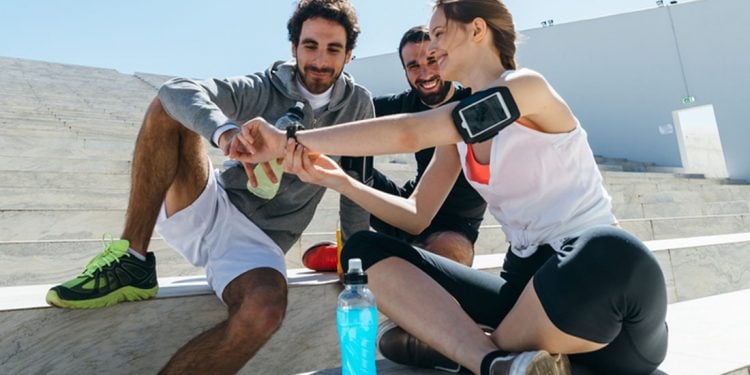As a personal trainer, you’re already skilled at holding clients accountable and pumping up their motivation. But, hey, it doesn't hurt to have a few additional tricks up your sleeve.
What about fitness technology? Everything from fitness apps to activity tracker metrics to Instagram pics can help tech-loving clients re-engage their motivation to stay active. Especially during these stressful times with the coronavirus, where clients might need the motivation the most. Here are a few suggestions.
Consider Fitness Apps with Incentives
Fitness apps can be highly motivating, but with thousands available, it’s not always easy to know which ones will work best with which clients. There’s the Daily Burn app, offering video workouts clients can do at home, and Zombies, Run!, which transforms an ordinary jog into a fitness game with more than a million players. These are just two of many.
As a starting point for suggesting fitness apps to your clients, consider the results of a 2016 study published in The Lancet Diabetes & Endocrinology (Finkelstein 2016). Subjects were more active compared to a control group when they used apps that offered one of two incentives based on activity level: a charitable donation or a cash payment. However, when the incentives were removed at the six-month mark of the year-long study, activity levels dropped substantially for the cash group only. The charity group didn’t demonstrate the same decline in activity even when there was no incentive. (There was also a Fitbit activity tracker group with no incentive; they were more active than controls in the second half of the study only.)
The researchers concluded that using apps with certain incentives might be most beneficial with a long-term protocol. As a trainer, consider how incentive-based apps could work short-term, or as part of a multi-pronged approach, to help clients jump-start waning motivation or gain momentum on the “home stretch” of an important goal.
As per the study above, a few app suggestions: The Charity Miles app donates to charities (choices of charities found within the app) for every mile that a user walks, bikes or runs. The Walk for a Dog app lets you raise money for animal organizations while you walk your dog. Try Pact for an app that offers payouts for meeting exercise goals.
Challenge Clients with Activity Tracker Metrics
When you wear a tracker every day, you might stop “listening” to its frequent notifications. It's not uncommon for clients to ignore their tracker’s activity prompts.
Here’s a possible hack for that. Tell your clients you want to see a specific measurable result for a particular—but reasonable—length of time. For example, when a friend challenged me to rack up a perfect activity “score” on my tracker for seven days straight (i.e., close all rings on my Apple Watch), I said, “You're on!” I didn’t ignore any prompts because I wanted to show her, and myself, I could meet the challenge (which I did).
This motivation could work with a client/trainer relationship too. When clients know you’re expecting to see tracker results for a pre-arranged goal, they may be more likely to stick to the program. And some trackers like Apple Watch and Fitbit offer activity-sharing features so you can get a real-time look at how clients are progressing toward a goal.
NASM has a great personal trainer app (EDGE) that makes it easy to track fitness and design programs for your clients.
Strengthen Motivation with Social Media
Clients who enjoy posting to social media might also find exercise motivation there. As per the example above, I strengthened my resolve to meet the seven-day activity challenge by posting to social media about it. First, I told “the world” via Instagram and Facebook about the challenge I was hoping to meet.
Once you put it out there for friends and strangers alike to see, you’re more obligated to finish what you started. Seven days later, I posted the results: photos of a badge on my Apple Watch and phone, rewarding me for completing the challenge.
Some people snap similar posts with before and after selfies (either before/after a workout or before/after a body transformation). But not all clients are crazy about this level of sharing and exposure. Posting pics of tracker/app data or digital trophies might be a more comfortable alternative for clients who aren’t particularly selfie-centric.
Clients can leverage technology in all kinds of ways to help stir up motivation; be creative with your fit tech recommendations.
Reference
Finkelstein, E.A. 2016. Effectiveness of activity trackers with and without incentives to increase physical activity (TRIPPA): a randomised controlled trial. The Lancet Diabetes & Endocrinology, 4 (12), 983-995. https://dx.doi.org/10.1016/S2213-8587(16)30284-4
















